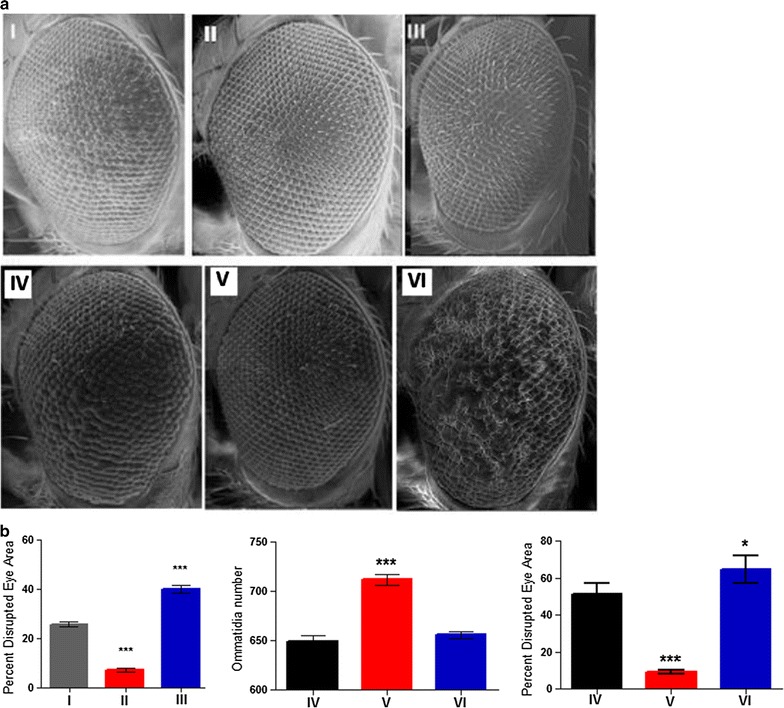Fig. 4.

Buffy suppresses the α-synuclein-induced developmental defects in the eye. a Scanning electron micrographs when Buffy is overexpressed or inhibited in the eye with the eye-specific GMR-Gal4 transgene; (I) GMR-Gal4/UAS-lacZ; (II) GMR-Gal4/UAS-Buffy; (III) GMR-Gal4/UAS-Buffy-RNAi and when co-expressed with α-synuclein; (IV) UAS-α-synuclein; GMR-Gal4/UAS-lacZ; (V) UAS-α-synuclein; GMR-Gal4/UAS-Buffy; and (VI) UAS-α-synuclein; GMR-Gal4/UAS-Buffy-RNAi. b Biometric analysis showed a significant difference in the disrupted area of the eye when Buffy was inhibited in the developing eye (I–III). Biometric analysis shows a marked difference when Buffy is inhibited in an α-synuclein expressing background (IV–VI) with decreased ommatidia number and highly degenerated ommatidial array whereas when Buffy is overexpressed in the α-synuclein background, there is a rescue of the α-synuclein-induced phenotypes as determined by one-way ANOVA and Dunnett’s multiple comparison test (P < 0.05 and 95 % CI), error bars indicate the SEM, asterisks represents statistically significant result and n = 10
